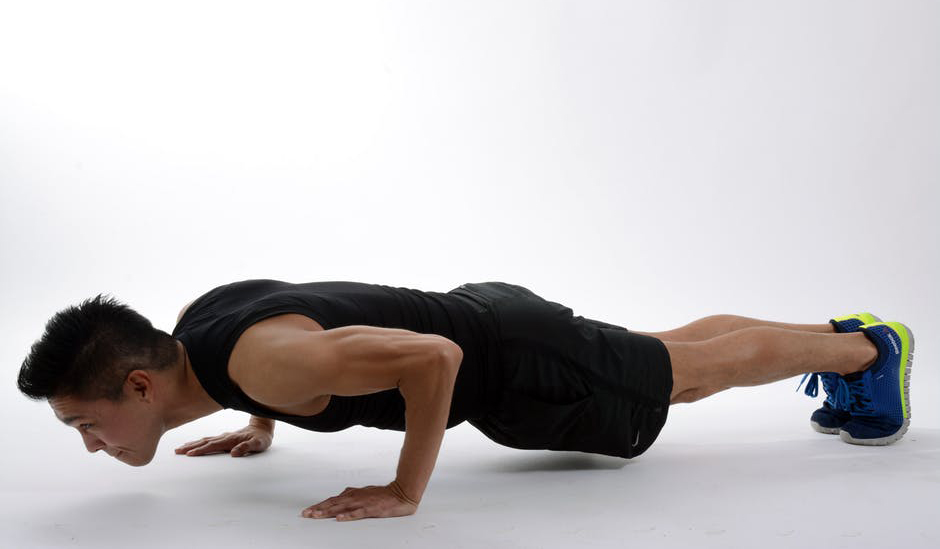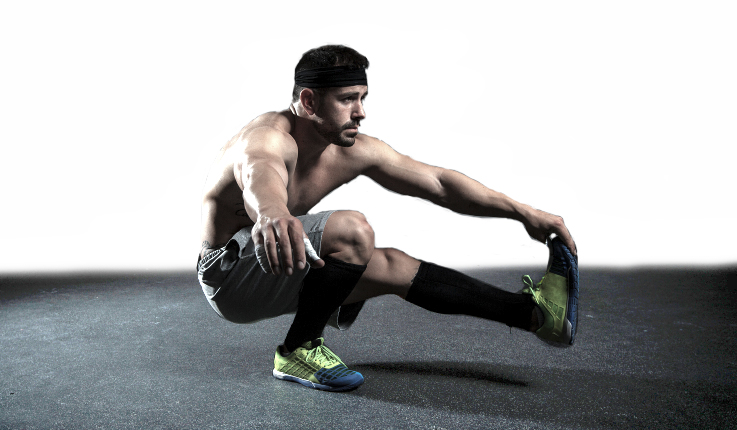Getting in a proper gym session can be hard even on the best of days. We should all, however, be exercising on a regular basis – planning your workouts is key to maintain structure in your hectic lifestyles. There are at times we simply cannot get to the gym, and for this reason, it’s always a good idea to have an at home workout plan that you can fall back on. At home workouts are more about maintaining some sort of conditioning levels – that’s if you usually hit the gym – as you will struggle to make any great advances in strength or mass development. At home, workouts are great to get a good pump on – the blood flowing to your muscles and apart from maintaining the conditioning of your muscle through pumping of blood through them, they are great for understanding how to control your body’s movements, coordination, and muscle control & contraction.
We have laid out some exercises that you can perform at home with this everyday objects in your home. Some of the exercises are somewhat advanced with adaptations to exercises you may have seen before.
Press Ups
Everyone has seen a basic press up, right? However, you may be unaware that there are a few ways to execute this exercise, one of which can greatly improve the effectiveness in the development of the target muscle.
This variation consists of applying greater tension towards the chest. The benefits to this would be a larger recruitment of muscle fibres in this region, while the greater force tension can cause greater physiological adaptations. The basic movement stays the same, however, instead you should apply an inward force to your arms. Imagine while your hands are planted firmly on the floor and performing a press up, two people are either side trying to pull your hands out either direction. Your job is to prevent them from pulling your hands out by resisting and applying an equal or greater tension against this opposing force. This technique will greater improve your development – specifically your control – and can be applied when in the gym.
Decline Press Ups
You need to focus your attention on the angle. The best approach with this exercise is to first raise both arms up to roughly 45° angles. This is the angle you should execute the technique with and maintain throughout the entire range of motion. The best tool to perform the exercise is to use an armchair – make sure it can support the exercise safely, however. Place both hands shoulder length apart onto the edge of the armchair maintaining that roughly 45° angle. Keep your head and back straight.
Bicep Curl
Perform this by using the other hand as resistance. This is a very safe way to perform a bicep curl as you can directly manipulate the tension placed upon the bicep and its stabilising muscles.
Fold the belt in half; place one hand in the centre of the belt through the loop. With the opposite hand hold the belt a couple of inches below. With the hand underneath, pull down maintaining a consistent tension. With the hand above (the target arm), carry out a full bicep curl, keeping your upper arm on the target arm pinned close to your side. Remember to focus on the negative part of the movement.
Bicep Hammer Curl
This follows the same method as the bicep curl set out above. There are a couple of main differences, however. The first is that the grip in the target hand is a neutral grip (hammer grip) with the thumb pointed up. You also must bring your arm in front of you. Alternatively, you can simply use the free hand to just place onto the other hand (working arm) and apply resistance.
Tricep Extension
There are variations to this exercise; each helps to stimulate the triceps differently. The first is similar to an overhead tricep extension. Using a belt behind your head and holding it with the opposite hand – both thumbs pointing down towards the ground. Just like an overhead triceps extension, this exercises stretches out your triceps which increases the recruitment of the muscle fibres.
The second variation works the same way as a cable triceps extension: Place your hand through the loop with a neutral grip (thumb pointed up), with the opposite hand holding a couple of inches above the other hand with the same neutral grip (thumb pointed up). The hand above should maintain a consistent resistant load throughout the whole range of motion (ROM).
Tricep Dips
Using an armchair is your safest option. Simply sit on the edge of a chair and place both hands on the chair beside you. Then, while keeping your hands firmly on the chair, bring your hips forward so that you are clear of the chair. Stretch your legs out in front of you while maintaining that same position. Now perform a dip making sure that your elbows point backwards not to the sides. Throughout the whole exercise maintain a straight back. If the exercise is too easy you can simply place a weight of some sort onto your thigh.
One-Leg Squats
This is an advanced exercise that stimulates many muscle fibres that go into stabilisation. This is a hard exercise to execute effectively but, if done right will not only aid your leg development outside of the gym but, also help to improve your squatting technique, balance, and your ability to engage different muscle fibres in your legs in a specific manner.
Calve Raise
All you need is a step or stairs. Stand on the edge of a step, midway between the centre of the sole of your foot and your digits (toes). Have your feet aligned straight in front. Slowly push through your calves to extend all the way up, squeeze, and then slowly return. You can then align your feet outwards a few degrees to stimulate a larger portion of the outer head of the calve muscles, known as the gastrocnemius caput lateral. If you wish to increase the resistance opt for a backpack with some type of weight in it.




Thanks for the nice post.
If you are trying to tone up your back, you might think the best way to do it is to hit the dumbbells and the machines. This is one way to get a good back exercise in, but there are also plenty of bodyweight exercises for back muscle growth that work just as well. They’re also easier to carry out in most cases, because they do not require the use of bulky dumbbells or machines. The back is composed of many different muscles, so it’s important to do a variety of exercises that hit all of them.”